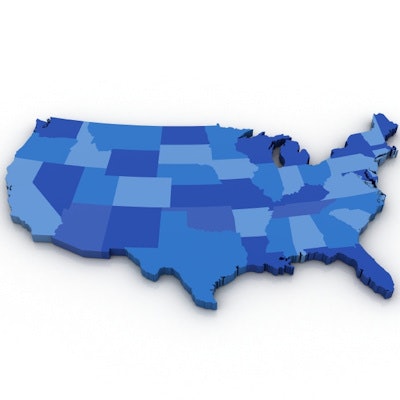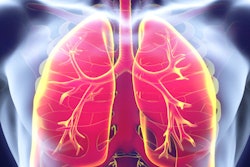
Smokers in densely populated regions in the U.S. live significantly closer to a CT lung cancer screening facility than those residing in more sparsely populated areas, according to an article published online September 1 in the Journal of the American College of Radiology.
Recent reports of the low uptake of CT lung screening in the U.S. have spurred attempts by various groups to investigate the optimal implementation of the exam. One of the key components that remains understudied is eligible smokers' access to screening facilities, noted first author Dr. Tina Tailor from Duke University and colleagues.
To investigate this topic, the researchers examined the geographic distribution of smokers in distinct regions, or census tracts, throughout the U.S., as well as the smokers' driving distance from one of 6,923 CT lung cancer screening facilities accredited by the American College of Radiology (ACR). Population data were derived from surveys conducted by the U.S. Census Bureau, and distances were calculated using an estimation model developed by Boscoe et al.
Among 73,057 different U.S. Census tracts, driving distance to a CT facility was inversely associated with population density -- suggesting that individuals living in high population areas (i.e., urban regions) had better access to screening centers than those in low population areas (i.e., rural regions).
Furthermore, the researchers found that 81.8% of smokers lived within 15 miles of a CT screening facility, though there was considerable variability within and among different states. For example, the average driving distance to the nearest screening facility in southwest California was less than 30 miles. However, the distance was markedly lower for smokers residing in a densely populated census tract in Riverside County, compared with the distance for those in a less-dense tract in San Bernardino County.
| Distance to CT screening centers for smokers in high-density vs. low-density regions | ||
| High population density census tract in California | Low population density census tract in California | |
| Driving distance | 0.04 miles | 94.82 miles |
The tendency to situate CT screening facilities in urban settings is likely due to the greater overall need and utilization of imaging in these areas, as well as the associated economic advantage -- yet this trend could leave numerous rural communities underserved, according to Tailor and colleagues. Many rural areas in Maine, Texas, Montana, and Nevada, for instance, include more than 10,000 smokers who may be eligible for screening but who live more than 100 miles away from a screening site.
"Although reasons for this are multifactorial, the geographic variability of CT facilities may raise [the] question of whether current facility distribution is well-suited for all populations," the authors wrote. "More so, the intrastate variation in CT access draws attention to the need for coordinated state- and local-level initiatives if lung cancer screening is to be successfully implemented for all eligible populations."




















